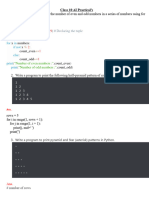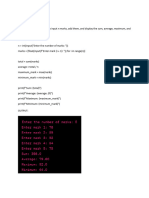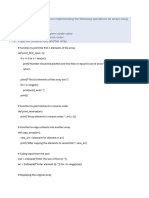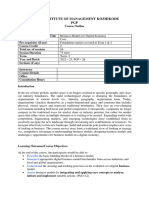0% found this document useful (0 votes)
87 views9 pagesClass 10 Programs For Project File
The document contains a series of Python programming exercises for Class 10 students at Delhi Public School, Hyderabad. Each exercise includes a specific task, such as calculating salaries, generating patterns, checking prime numbers, and manipulating arrays, along with the corresponding Python code. The exercises cover a range of topics including basic programming concepts, data manipulation, and the use of libraries like NumPy and Matplotlib.
Uploaded by
rheasharma146Copyright
© © All Rights Reserved
We take content rights seriously. If you suspect this is your content, claim it here.
Available Formats
Download as PDF, TXT or read online on Scribd
0% found this document useful (0 votes)
87 views9 pagesClass 10 Programs For Project File
The document contains a series of Python programming exercises for Class 10 students at Delhi Public School, Hyderabad. Each exercise includes a specific task, such as calculating salaries, generating patterns, checking prime numbers, and manipulating arrays, along with the corresponding Python code. The exercises cover a range of topics including basic programming concepts, data manipulation, and the use of libraries like NumPy and Matplotlib.
Uploaded by
rheasharma146Copyright
© © All Rights Reserved
We take content rights seriously. If you suspect this is your content, claim it here.
Available Formats
Download as PDF, TXT or read online on Scribd
/ 9






















































































